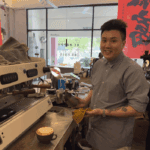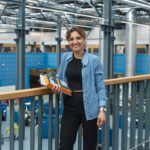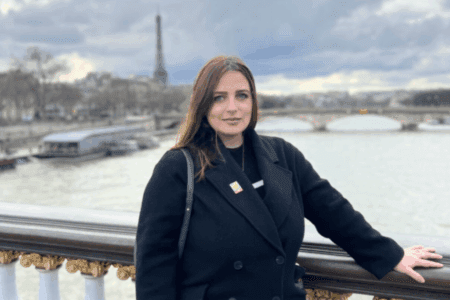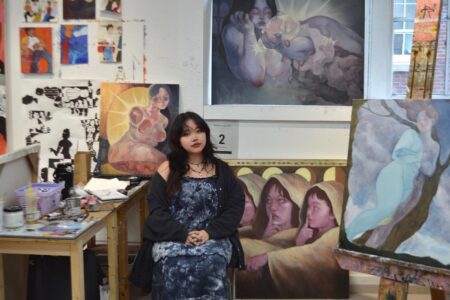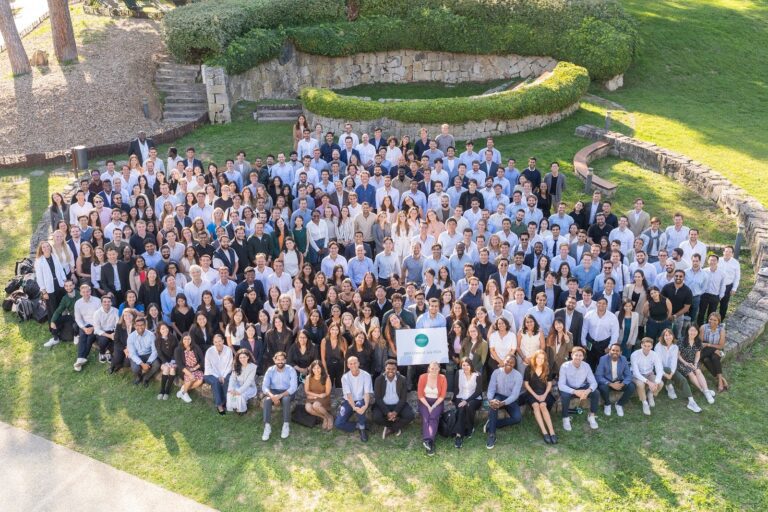
What do you think of when you think about Morocco?
Sweating on a camel’s back through the Agafay Desert? Tasting a savoury, earthy, and slightly sweet spoonful of chicken tagine in Marrakech? Stepping foot into the University of Al-Qarawiyin, the world’s first university, founded in 859 AD?
Do you think of beauty?
Warm terracotta, mosaic tilework, open-air markets that smell like spices, leather, sandalwood, and more — that doesn’t even cover half of the beauty of Moroccan arts and culture. For centuries, artists, designers, and writers, both local and international, have been drawn to its vibrancy, and today, the arts scene continues to flourish.
With a rich artistic heritage and cultural growth, Morocco has positioned itself as one of the leading hubs on the continent for contemporary African art. Contemporary Moroccan artists are “redefining” cultural narratives by blending the traditional with the new.
“We’ve seen in the last five to six years a lot of international interest. For instance, from galleries, but also auction houses to set up there,” says Rita Hamri, a General Manager at Pangaea Partners. “The city is really burgeoning with artists establishing their studios there. We have the MACAAL, which is a museum of contemporary African Art that just reopened with a new collection and curatorial perspective.”
Hamri wants to bring attention to the beauty of Morocco. It was there she was born and raised, moving to England at 18, then to France to pursue her education and career. Now completing an MBA at INSEAD, the world’s top business school, Hamri’s passion for the arts and culture of her home never wavered.
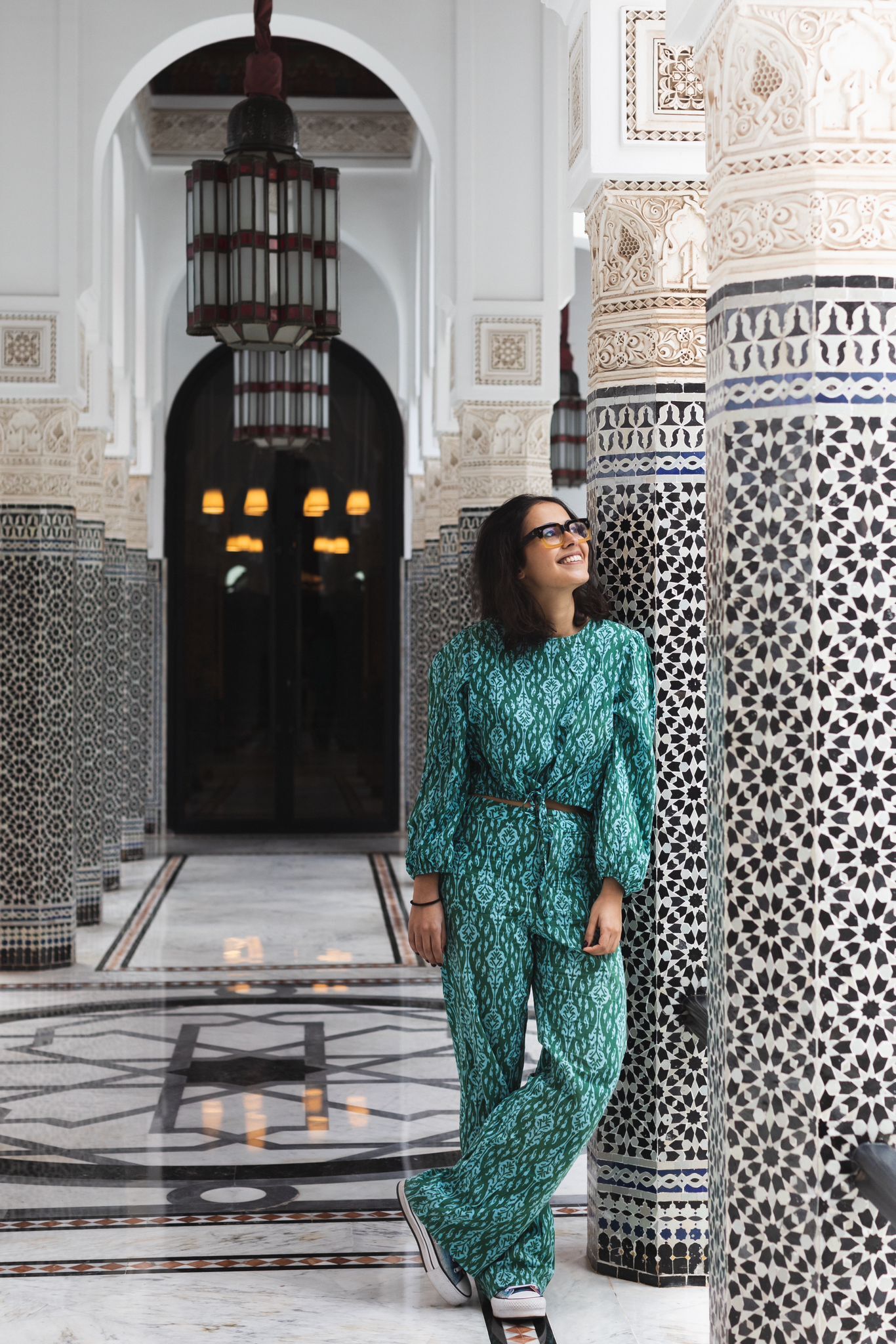
Before charting a career around Moroccan arts and culture, Hamri first pursued her bachelor’s degree in the UK, before moving to France due to Brexit. Source: Rita Hamri
A passion that follows you wherever you go
The love for arts and culture was instilled in her from young.
You don’t have to work in the arts to become a connoisseur, Hamri’s mother would prove. Despite being a pharmacist, she took to art like a fish to water. Growing up with a family that travelled everywhere and sought the unfamiliar, Hamri also got to witness many different cultures. Even today, her siblings live in Singapore and Hong Kong.
Hamri had attended a French school in Morocco, but when university rolled around, she wanted to experience a different educational system. That led her to the University of Warwick in the UK, where she studied international management.
“I grew up in Casablanca and went to French school, so changing the educational system was a big shift for me. But my parents always pushed me to go see new things and explore new things,” she says. “I think the beauty of the University of Warwick back then was how international it was.”

A trip to Morocco, organised by the Warwick’s Moroccan society and attended by over 80 students. Source: Rita Hamri
The warm and inviting international community soothed Hamri even through the coldest days — the weather was something she was certainly not used to. Even though she was living 1,429 miles away from home, with only 10 Moroccans at Warwick, she continued to connect deeply with her heritage by co-founding the Moroccan society.
The society had organised a trip for 100 students to visit the country, from Marrakech to the desert to the Atlas mountains. They attended a Berber Night Show in traditional costumes and danced the night away. Eight years later, Hamri and her friends still talk about these trips. Members of the society would return to discover Morocco with friends and family.

Hamri had spent several months working an internship in Hong Kong — an experience that would shape her future career in Moroccan arts and culture. Source: Rita Hamri
Bringing Moroccan culture to the global stage
Hamri had always wanted to work in the culture industry, but was scared to specialise in it. After graduating from Warwick, she went to the London School of Economics to pursue her master’s in finance and private equity — and in every internship or real-world experience she pursued, Hamri would connect business with arts and culture.
“My first internship was at Christie’s, the auction house in Hong Kong. Then I worked for a small startup focused on co-ownership of art. Later, I joined Convelio, a supply-tech startup revolutionising global art logistics,” she says. “I joined at the seed stage and stayed through Series B, helping the company grow from 10 to over 200 employees. My role focused on strategic projects.”
Years later, Hamri would create her own consulting firm and become General Manager of Pangaea Partners, a strategy consulting company supporting startups and SMEs across the art, culture, finance, and tech sectors. Her career would nearly come full circle, as she gets to work on projects centred on Marrakech and Morocco.
The firm now serves more than five clients in Paris, London, Casablanca, Marrakech, and Singapore. Her motivation was simple: to build a company that would let her explore the art industry while staying connected to the finance and tech worlds.
“I’ve always had this dual profile: very creative, but also deeply analytical,” she says. “I wanted to follow my passion and keep art in my life, and I’m proud that Pangaea Partners allowed me to do exactly that.”

“Love Maroc” by Moroccan visual artist, Hassan Hajjaj (b. 1961). Source: Rita Hamri
Hamri also collaborated with an international contemporary African art fair based in London, which held shows in Paris, London, New York, Marrakech, and Hong Kong.
Over three years, she supported emerging artists from across the continent and the diaspora, helping to put Marrakech on the cultural map and increase visibility for the local arts scene. Alongside that, she worked with a fintech startup seeking to expand into Morocco — her strong financial background allowing her to successfully lead the market entry.
“As of today, the only people we believe on Earth that can think differently are artists,” says Hamri. “We are in a world where it’s very difficult to be different. I had a chance to meet a lot of artists within the different projects I did, and we thought that their creative process, their DNA, their vision of the world — it’s quite unique and peculiar.”
Today, Hamri is pursuing her MBA at INSEAD, and aims to build on her cross-sector experience to transition into venture capital, impact investing, or strategy consulting — with a focus on projects that forge meaningful social and cultural impact.
“INSEAD’s global network, combined with her strategic project experience, will be instrumental in achieving this goal,” she says.
In the long term, she hopes to start her own investment fund to bring international capital to high-potential ventures in emerging markets. More specifically the African continent, leveraging Morocco’s vibrant economy and strategic position as a bridge between Europe and Africa.




